Veligero Octopus, Octopus veligero
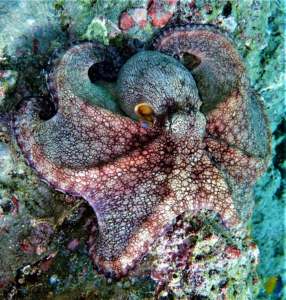
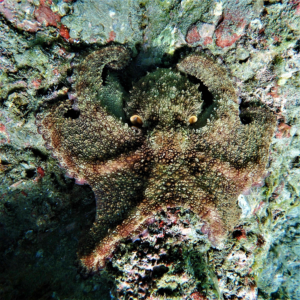


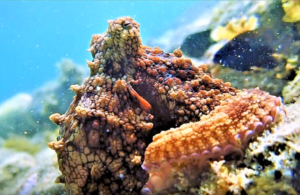
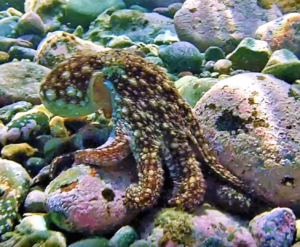
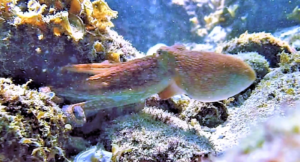 Veligero Octopus, Octopus veligero. Underwater photographs taken in Zihuatanejo Bay, Guerrero, March 2018. Photographs courtesy of Ron Woheau, Zihuatanejo, Guerrero.
Veligero Octopus, Octopus veligero. Underwater photographs taken in Zihuatanejo Bay, Guerrero, March 2018. Photographs courtesy of Ron Woheau, Zihuatanejo, Guerrero.
Phylogeny: The Veligero Octopus, Octopus veligero, is a member of the Octopodidae Family of Benthic Octopi. They belong to Class Cephalopoda, which includes cuttlefish, nautiloids, and squid. In Mexico, they are known as Pulpo Velado.
Morphology: The Veligero Octopus is typically rugose in texture and mottled red-brown, with metallic gold and silver around the eyes and head. However, the dorsal color can vary from iridescent green, white, black, and purple. They have large, plumelike gills, with approximately 30 to 34 lamellae per gill. The arms are less than three times the body length, and webbed to the tip. The dorsal mantle length is 5.0 cm (2.0 inches) to 7.0 cm (2.75 inches) and the total body length including the longest arm is 36 cm (14 inches) to 46 cm (18 inches).
Habitat and Distribution: The Veligero Octopus inhabits Central Baja California coast in the Sea of Cortez, and the outer peninsular coast from Cabo San Lucas to San Juanico. They are typically found under tidal and subtidal rocks and crevices up to 20 m (65 feet), but they have been trawled at depths of 200 m (650 feet) deep off the coast of Cabo San Lucas
Diet: The diet of the Veligero Octopus consists of bivalves, small crabs, cup-and-saucer limpets, and snails.
Reproduction: The Veligero Octopus is gonochoric. The eggs are small and larvae are planktonic.
Common Misidentification: This species of octopus is distinguished from Verill’s Two-spot Octopus, Octopus bimaculatus, by its distinct orange funnel and the rosy underside of its arms boasting large, white suckers. The Veligero Octopus is also distinguished by its shorter arms which are webbed to the tip.